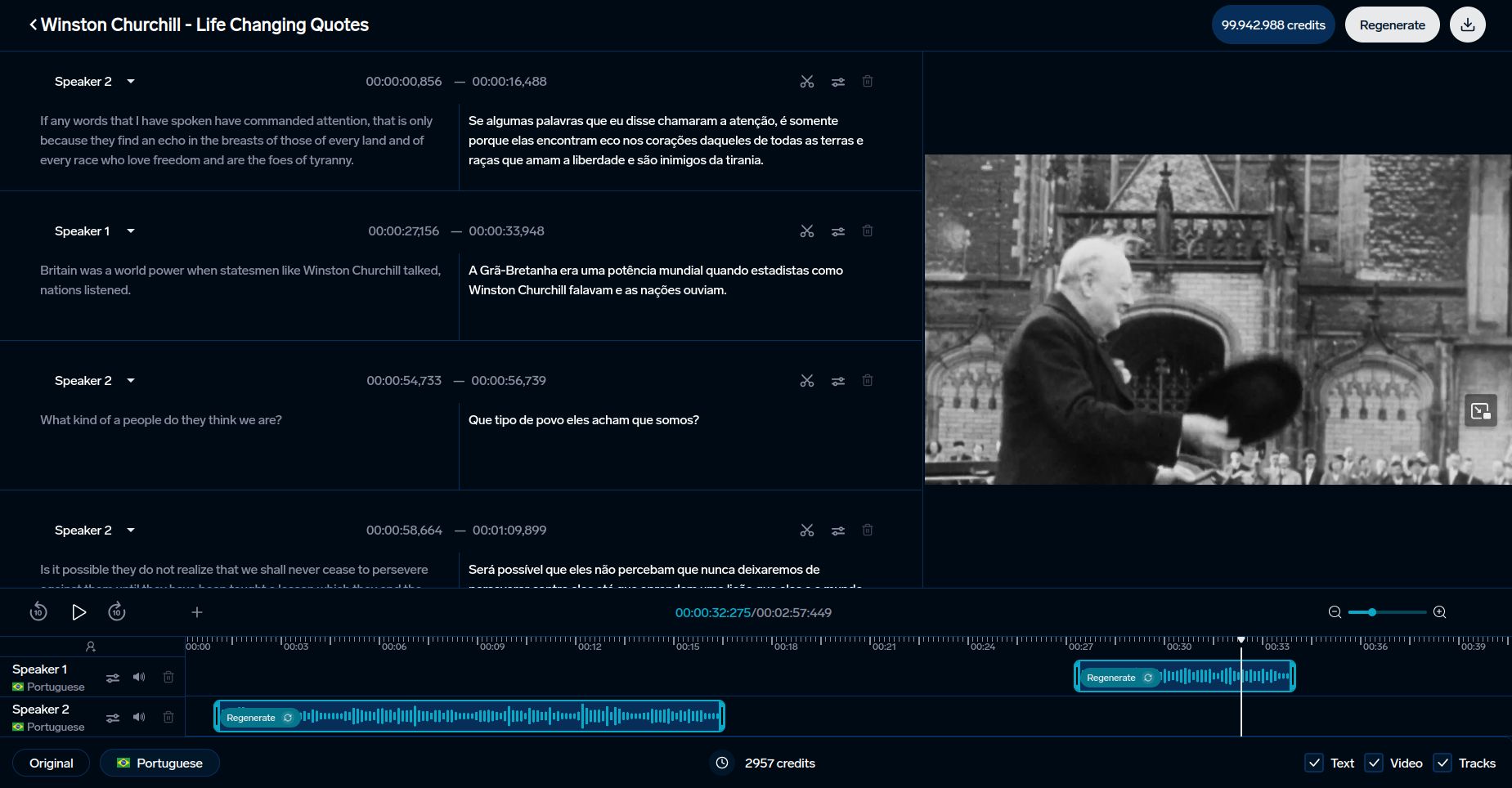Why Cultural Context Matters in AI Dubbing
AI dubbing makes translating and dubbing content faster and cheaper. But without understanding cultural context, it can fail to connect with audiences. Here's why it matters:
- Literal Translations Cause Confusion: Phrases like "break a leg" can be misunderstood if translated directly.
- Loss of Audience Connection: Poorly adapted dubbing reduces engagement, damages trust, and risks brand reputation.
- Technical Challenges: Lip-syncing and timing issues make it harder to adapt cultural nuances.
Quick Fixes for Better AI Dubbing:
- Train AI on Diverse Data: Include cultural expressions, accents, and regional nuances.
- Use Feedback Loops: Improve AI by integrating user and expert insights.
- Blend AI with Human Expertise: Let cultural specialists fine-tune AI-generated content.
Tools like DubSmart combine AI precision with human oversight to deliver dubbing that resonates globally. To succeed, creators should prioritize both accurate translations and cultural understanding.
Challenges of Overlooking Context in AI Dubbing
Confusion from Literal Translations
AI dubbing systems often stumble when translating phrases without considering cultural context. For instance, the English theater phrase "break a leg" might be translated literally, resulting in a confusing or even absurd message for audiences unfamiliar with the idiom’s encouraging meaning. Such missteps highlight the importance of accounting for cultural expressions to ensure clear communication and maintain audience trust.
One major reason AI struggles with cultural nuances is the lack of diverse training data. This issue becomes even more critical in educational content, where both accurate language use and cultural sensitivity are essential for effective teaching.
Losing Audience Connection
When AI dubbing ignores cultural sensitivities, the consequences go beyond simple misunderstandings:
- Lower engagement: Audiences may feel alienated by culturally inappropriate translations, leading to reduced interest and trust.
- Reputation risks: Poorly adapted dubbing can harm a brand’s image, especially in new markets.
- Weakened communication: Misinterpreted cultural references erode emotional impact, making it harder to connect with audiences on a deeper level.
This disconnect is especially problematic in global marketing and entertainment, where creating a strong emotional bond and respecting cultural nuances are key to success.
Technical Barriers in Dubbing
Technical limitations add another layer of difficulty to achieving culturally accurate dubbing. Lip-syncing and timing constraints can force compromises, making it hard to align mouth movements, maintain meaning, and preserve emotional tone across languages. Additionally, adapting culturally specific gestures or references can be a persistent challenge.
Addressing these issues requires a mix of advanced AI and human expertise. As experts suggest, effective dubbing demands a fine balance between technical precision and cultural understanding.
To tackle these challenges, AI systems must evolve to better recognize and adapt to cultural subtleties while working within technical limits. This involves using more diverse training data and building robust feedback systems to improve cultural and linguistic accuracy over time.
Ways to Improve Context Awareness in AI Dubbing
Training AI with Varied Data
For AI dubbing to understand context effectively, it needs exposure to a wide range of linguistic patterns, regional accents, and cultural expressions. By developing detailed voice profiles that include elements like pitch, tone, and emotional depth, AI systems can produce synthetic voices that reflect diverse cultural identities across languages.
Refining AI Through Feedback
AI dubbing systems improve over time by integrating user and expert feedback into their learning processes. This ongoing refinement helps the AI better understand cultural subtleties and deliver more accurate results.
"Cultural sensitivity in AI dubbing extends beyond linguistic accuracy to authentic representation and ethical standards"
Blending AI with Human Expertise
The best results in context-aware AI dubbing come from a mix of AI capabilities and human input. Linguists and cultural specialists review and adjust AI-generated content to ensure it aligns with cultural expectations. While the AI manages initial translations and pattern recognition, human experts fine-tune the details, ensuring both accuracy and cultural relevance.
Platforms like DubSmart illustrate this collaborative model by pairing AI-driven translation with human oversight. This combination ensures that dubbing is both culturally appropriate and true to the original content [Context].
sbb-itb-f4517a0
Tools That Support Context-Aware AI Dubbing
AI dubbing has evolved significantly, with tools now focusing on blending precision with features that respect linguistic and cultural subtleties. These tools help tackle issues like overly literal translations, lack of audience connection, and technical hurdles.
DubSmart: Enhancing AI Dubbing with Precision and Sensitivity

DubSmart provides a suite of features - voice cloning, subtitle generation, and editing tools - that aim to keep multilingual content emotionally resonant and culturally aligned. Supporting 33 languages, it allows creators to expand their reach while staying true to cultural expressions.
Here’s how DubSmart’s features contribute to this goal:
| Feature | Benefit for Cultural Context |
|---|---|
| Voice Cloning | Preserves original voices and emotional tone |
| Subtitle Generation | Ensures smooth alignment of visuals and audio |
| Editing Tools | Fine-tunes translations for cultural relevance |
| Custom Voice Creation | Reflects regional accents and speaking styles |
Experts from Murf.ai emphasize:
"Cultural sensitivity in AI dubbing is not just about linguistic accuracy; it's about recognizing and appreciating the rich tapestry of global cultures"
DubSmart stands out by combining advanced AI with human review, ensuring translations capture cultural nuances accurately. This partnership between technology and human expertise ensures content resonates authentically with diverse audiences.
Conclusion: Enhancing AI Dubbing with Cultural Context
Understanding cultural context is crucial for creating AI-dubbed content that resonates with audiences worldwide. Combining advanced AI technology with human insight allows for better preservation of subtle cultural nuances, especially when dealing with idioms, humor, and historical references.
Platforms like DubSmart, which supports 33 languages, demonstrate how AI can meet cultural expectations. Features such as voice cloning, subtitles, and human oversight ensure the dubbing process respects cultural sensitivities. While tools like DubSmart tackle these challenges, the future of AI dubbing will rely heavily on refining technology and maintaining cultural sensitivity.
The success of AI dubbing depends not just on accurate language translation but also on its ability to mirror and respect cultural diversity. This calls for continuous advancements in cultural training data and AI systems to better reflect the richness of global cultures.
For content creators aiming to connect with international audiences, the focus should be on adopting tools and strategies that emphasize cultural understanding as much as technical precision. This approach helps ensure dubbed content feels genuine while effectively engaging diverse viewers worldwide.
FAQs
What is cultural context in translation?
Cultural context refers to understanding the traditions, norms, and idioms specific to a society to ensure the intended meaning is preserved during translation. For instance, the English idiom "break a leg", which means "good luck", might confuse Japanese audiences if translated literally, as the phrase doesn’t exist in their cultural framework.
How does cultural context affect AI dubbing quality?
Cultural context helps ensure that dubbed content resonates with the target audience. Without this understanding, AI might produce translations that are technically correct but fail to connect emotionally or culturally with viewers.
What role do human experts play in culturally-aware AI dubbing?
Human experts are crucial for reviewing AI-generated content. Specialists in culture help ensure that the dubbed material aligns with local customs and norms, catching and correcting potential errors that AI might overlook.
How can AI dubbing systems improve cultural sensitivity?
AI systems can enhance cultural sensitivity by using diverse datasets, collaborating with cultural experts, and continuously learning from feedback.
What are the consequences of poor cultural context in AI dubbing?
| Consequence | Impact |
|---|---|
| Misunderstandings | Key messages are unclear or lost |
| Cultural Offense | Violates local norms and values |
| Lost Engagement | Viewers feel disconnected |
| Brand Damage | Harms reputation and credibility |
How can content creators ensure cultural accuracy in AI dubbing?
Content creators should choose AI dubbing solutions that combine advanced technology with human oversight. Engaging representatives from the target audience for regular feedback can also refine cultural accuracy. Platforms like DubSmart demonstrate this approach by blending AI precision with expert guidance to maintain cultural relevance.
These FAQs emphasize the importance of combining cultural awareness with cutting-edge technology in AI dubbing. It’s a key factor in creating content that resonates globally.
